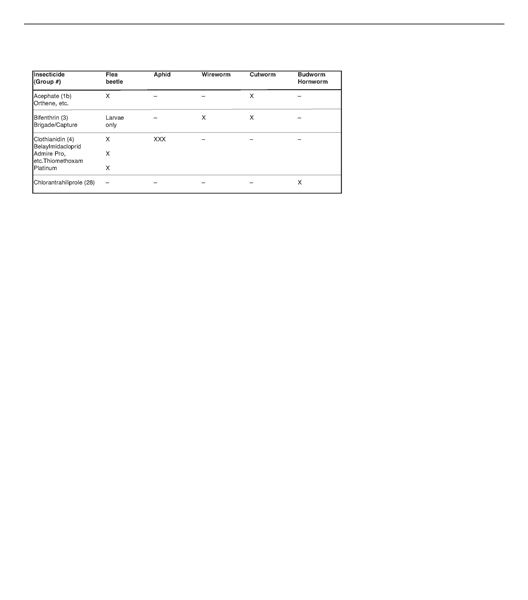Tray Drench And/Or Transplant Water Insecticides For Tobacco
DR. LEE TOWNSEND
LEXINGTON, KY.
This table summarizes options for tobacco insect controls available as tray drench and/or transplant water applications. The insecticide common name, brand names, and insecticide mode of action group number (IRAC) appear in the first column; pests appear in other columns (X represents control according to the label).
Tray drench / transplant water applications provide an efficient way of applying preventive controls for key pests. However, pest levels may be high enough in some fields to cause damage even if preventive treatments are used. Therefore, it is important to check fields to see if supplemental control is needed. Many products have a range of rates. Normally, high rates provide better control under heavy infestation pressure and for longer periods of time.
For example, tray drench / transplant water applications may not provide effective cutworm or wireworm control if pest pressure is high in the field. The insecticide is present in a small area around the plant and the insect may cause significant damage before there is an effect.
Prospects for cutworm damage are greatest in fields where there was a significant flush of weed growth in late winter or early spring, especially if transplanting is delayed by wet field conditions.
Wireworm injury can be anticipated in tobacco fields that have had a significant bluegrass component for several years prior to tobacco. In these instances, pre-plant incorporated insecticide applications are likely to provide better protection of transplants. ∆
DR. LEE TOWNSEND: Extension Entomologist, University of Kentucky
